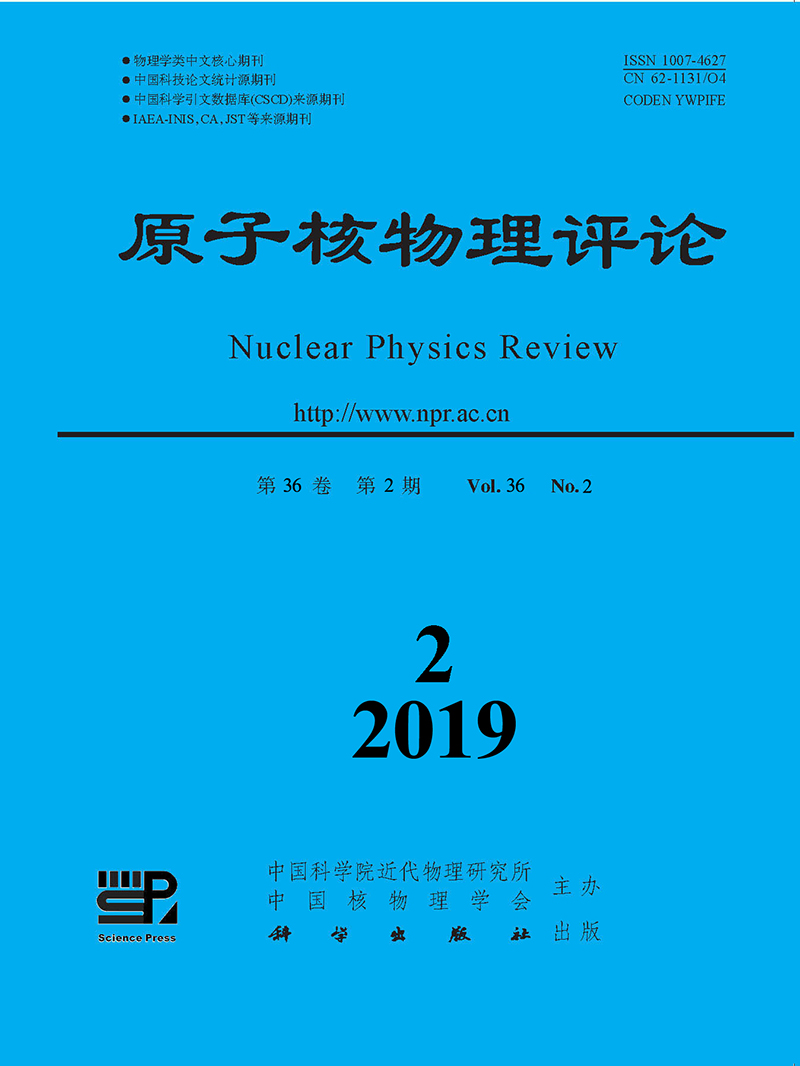|
[1]
|
WANG Tieshan, ZHANG Baoguo. Isotope, 1996(1):42. (in Chinese) (王铁山, 张保国. 同位素, 1996(1):42.) |
|
[2]
|
RAPPAPORT P, LINDER E G. Journal of Applied Phsics, 1953, 24(9):11104. |
|
[3]
|
WINDLE W F. IEEE Transactionson Aerspace, 1964, 2(2):646. |
|
[4]
|
KAVETSKIY A. Applied Radiation and Isotopes, 2009, 67:1057. |
|
[5]
|
YAKUBOVA G N. Dissertations & Theses-Gradworks, 2010. |
|
[6]
|
OU Pin. Theoretical Study on the Factors Affecting the Efficiency of Direct Charge Nuclear Battery[D]. Heiyang:University of South China, 2012:11. (in Chinese) (欧频. 直接充电式核电池效率影响因素理论研究[D]. 衡阳:南华大学, 2012:11.) |
|
[7]
|
OU Pin, ZHOU Jianliang, ZUO Guoping, et al. Nuclear Technology, 2011, 34(11):872. (in Chinese). (欧频, 周剑良, 左国平, 等. 核技术, 2011, 34(11):872.) |
|
[8]
|
WU Yican. Fusion Science and Technology, 2018, 74:321. |
|
[9]
|
WU Yican, SONG Jing, ZHENG Huaqing, et al. Annals of Nuclear Energy, 2015, 82:161. |
|
[10]
|
WU Yican, FDS Team. Fusion Engineering and Design, 2009, 84(7-11):1987. |
|
[11]
|
WU Yican, SONG Jing, HU Liqin, et al. Nuclear Science and Engineering, 2016, 36(01):62. (in Chinese) (吴宜灿, 宋婧, 胡丽琴, 等. 核科学与工程, 2016, 36(01):62.) |
|
[12]
|
WU Yican, LIU Chao, SONG Gang. Nuclear Science and Engineering, 2016, 36(1):77. |
|
[13]
|
LINDER E G, CHRISRIAN S M. Journal of Applied Physics, 1952, 23(11):1213. |
|
[14]
|
BOWER K E, BARBANEL Y A, SHRETER Y G, et al. Polymers, Phosphors, and Voltaics for Radioisotope Microbatteries[M]. Florida:CRC Press, 2002. |
|
[15]
|
LI Deping, PAN Ziqiang. Handbook of Radiation Protection. Volume 1, Radiation Sources and Shielding[M]. Beijing:Atomic Energy Press, 1987:114. (in Chinese). (李德平, 潘自强. 辐射防护手册.第一分册,辐射源与屏蔽[M]. 北京:原子能出版社, 1987:114.) |
|
[16]
|
KAVETSKIY A, YAKUBOVA G, YOUSAF S M, et al. Applied Radiation & Isotopes, 2011, 69(2):744. |
|
[17]
|
ZHOU Yu, QI Rui, FAN Xiong, et al. Material Analysis Method[M]. Beijing:China Machine Press, 2011:183. (in Chinese) (周玉, 漆璿, 范雄, 等. 材料分析方法[M]. 北京:机械工业出版社, 2011:183.) |
|
[18]
|
SEILER H. Scanning, 1978, 1(3):195. |
|
[19]
|
CHEN Shipu, WANG Yongrui. Metal Electron Microanalysis[M]. Shanghai:China Machine Press, 1989:156. (in Chinese) (陈世朴, 王永瑞. 金属电子显微分析[M]. 上海:机械工业出版社, 1989:156.) |
|
[20]
|
LU Xiting. Nuclear Physics[M]. Revised ed. Beijing:Atomic Energy Press, 2000. (卢希庭. 原子核物理[M]. 修订版. 北京:原子能出版社, 2000.) |
|
[21]
|
LIU Yunpeng, TANG Xiaobin, DING Ding, et al. Journal of Atomic Energy Science and Technology, 2012, 46(b09):611. (in Chinese) (刘云鹏, 汤晓斌, 丁丁, 等. 原子能科学技术, 2012, 46(b09):611.) |
|
[22]
|
HU Hanquan, LI changquan, CHEN Peijing, et al. Journal of Vacuum Science and Technology, 1983(2):79. (in Chinese) (胡汉泉, 李昌全, 陈丕瑾, 等. 真空科学与技术学报, 1983(2):79.) |
|
[23]
|
WANG Xiaoyu, HAN Yuncheng, ZHANG Jiachen, et al. Nucl Instr and Meth A, 2019, 927:343. |
|
[24]
|
LIU Xueque. Cathodic Electronics[M]. Beijing:Science Press, 1980:171. (in Chinese) (刘学悫. 阴极电子学[M]. 北京:科学出版社, 1980:171.) |






 甘公网安备 62010202000723号
甘公网安备 62010202000723号 DownLoad:
DownLoad: